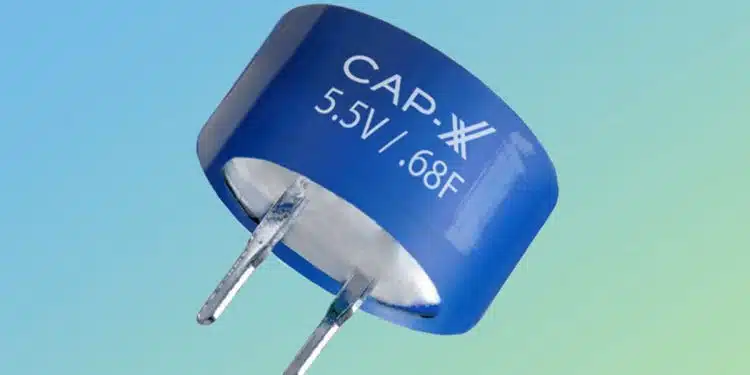CAP-XX, the leading manufacturer of ultra-thin prismatic, cylindrical, and Lithium-Ion/Hybrid supercapacitors, announced it has added coin cell supercapacitors to its product portfolio.
Coin cell supercaps replace button cell batteries (and the battery holder) to provide real-time clock back-up power, and ride through for battery-operated devices to allow time for battery replacements. The new CAP-XX coin cell supercap product line is available with six weeks lead-time.
The 5.5V coin cell supercapacitors are available in either horizontal or vertical mounts, come in standard (-25°C to +70°C) or high (-25°C to +85°C) operating temperature ranges, offer a capacitance range of 0.1F to 1.5F, and offer long operating life (>500,000 charge/discharge cycles). These supercaps are ideal for high-reliability industrial applications by providing a full industrial temperature range for low current RTC and memory backup requirements and a demonstrated 20-year operating life. A low-profile design makes them very useful in space-constrained applications.
With quick response and recharge times, these devices offer higher power than batteries and greater energy density than aluminium electrolytic capacitors.
Example applications include:
- Onboard memory backup circuits
- Audio output circuits
- Power conversion
- IoT energy harvesting/storage
Supercapacitors can handle peak power events, supporting batteries and energy harvesters configured to provide low-power current at maximum efficiency. This architecture allows designers to use smaller, cheaper, low-power batteries and extend their run-time and cycle life, or use intermittent ambient energy sources such as solar photovoltaic. Supercapacitors also enable ultra-quick device charging and wireless power transfer, and provide the backup needed for graceful shutdown and “last gasp” transmissions in mission-critical applications.
“In 2022, we have actively expanded our supercapacitor portfolio with hybrid lithium-ion supercapacitors, then large and powerful 16V – 2000V modules, and now coin cells, to meet the power management and energy storage needs for the broadest range of customer applications,” said Jeff Colton, EVP at CAP-XX Americas.
































